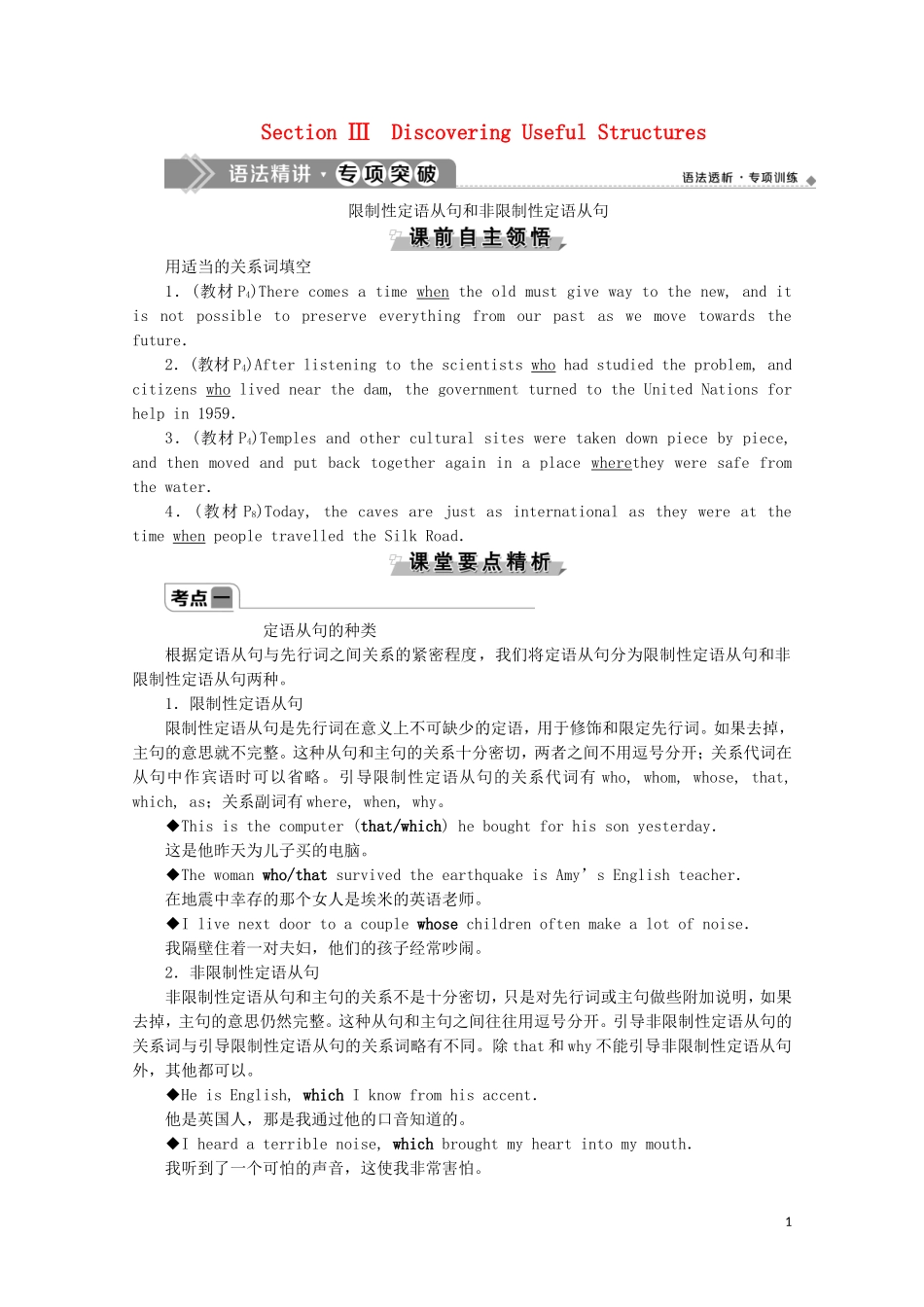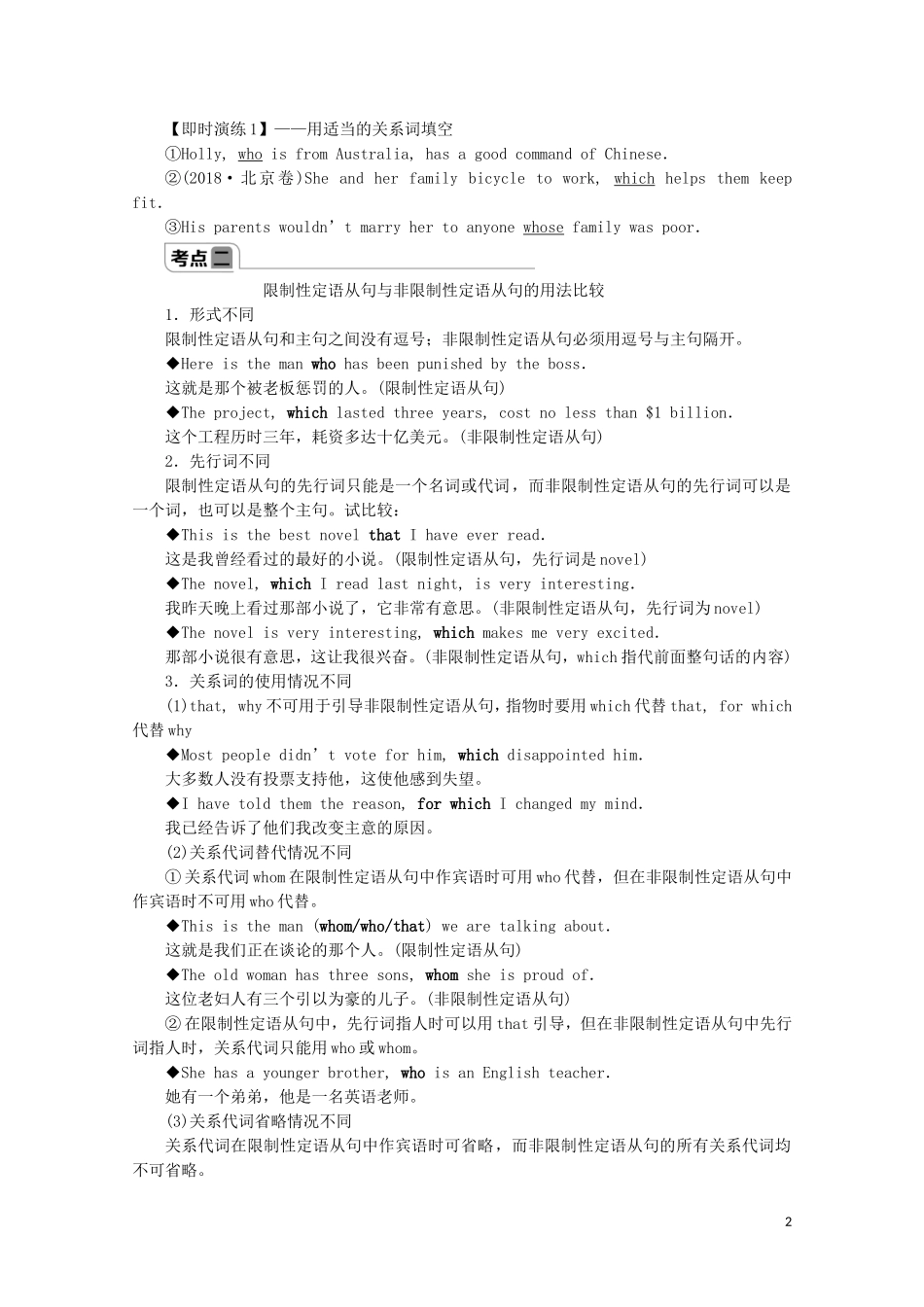Section Ⅲ Discovering Useful Structures限制性定语从句和非限制性定语从句用适当的关系词填空1.(教材 P4)There comes a time when the old must give way to the new, and it is not possible to preserve everything from our past as we move towards the future.2.(教材 P4)After listening to the scientists who had studied the problem, and citizens who lived near the dam, the government turned to the United Nations for help in 1959.3.(教材 P4)Temples and other cultural sites were taken down piece by piece, and then moved and put back together again in a place wherethey were safe from the water.4.(教材 P8)Today, the caves are just as international as they were at the time when people travelled the Silk Road. 定语从句的种类根据定语从句与先行词之间关系的紧密程度,我们将定语从句分为限制性定语从句和非限制性定语从句两种。1.限制性定语从句限制性定语从句是先行词在意义上不可缺少的定语,用于修饰和限定先行词。如果去掉,主句的意思就不完整。这种从句和主句的关系十分密切,两者之间不用逗号分开;关系代词在从句中作宾语时可以省略。引导限制性定语从句的关系代词有 who, whom, whose, that, which, as;关系副词有 where, when, why。◆This is the computer (that/which) he bought for his son yesterday.这是他昨天为儿子买的电脑。◆The woman who/that survived the earthquake is Amy’s English teacher.在地震中幸存的那个女人是埃米的英语老师。◆I live next door to a couple whose children often make a lot of noise.我隔壁住着一对夫妇,他们的孩子经常吵闹。2.非限制性定语从句非限制性定语从句和主句的关系不是十分密切,只是对先行词或主句做些附加说明,如果去掉,主句的意思仍然完整。这种从句和主句之间往往用逗号分开。引导非限制性定语从句的关系词与引导限制性定语从句的关系词略有不同。除 that 和 why 不能引导非限制性定语从句外,其他都可以。◆He is English, which I know from his accent.他是英国人,那是我通过他的口音知道的。◆I heard a terrible noise, w...


